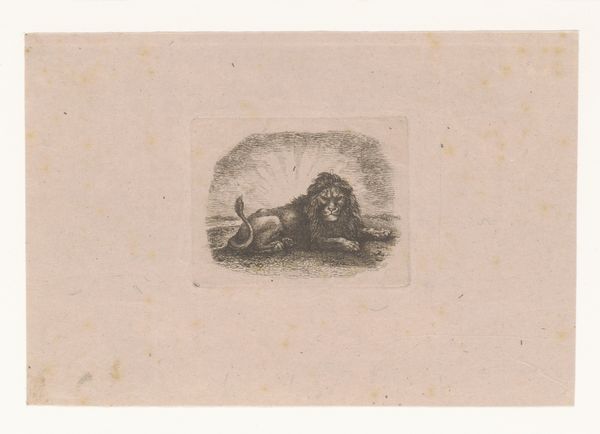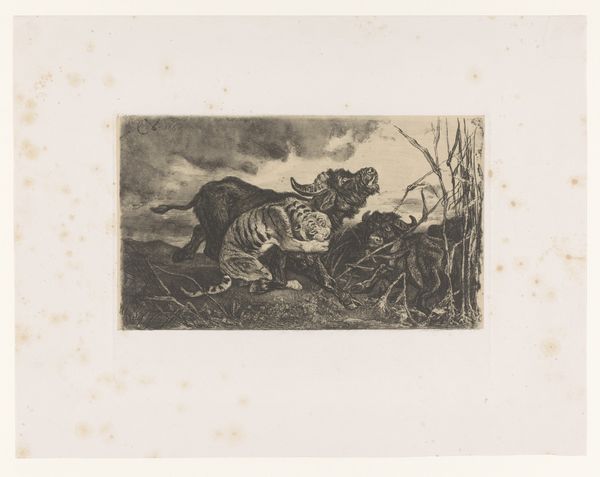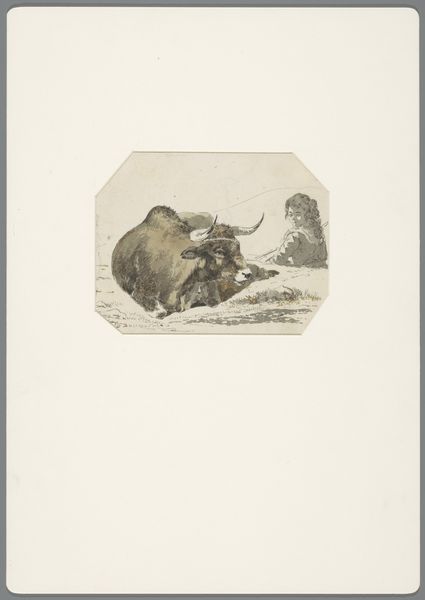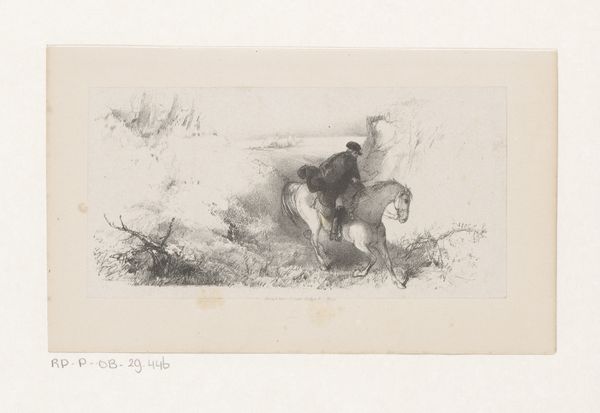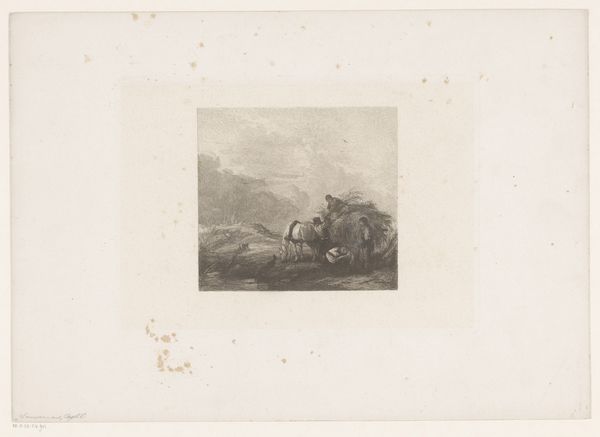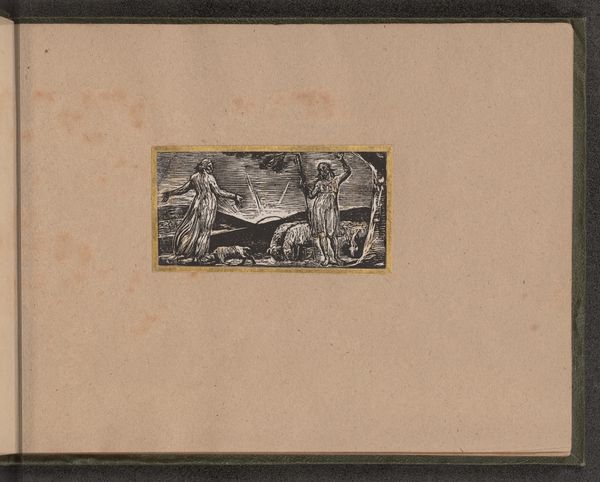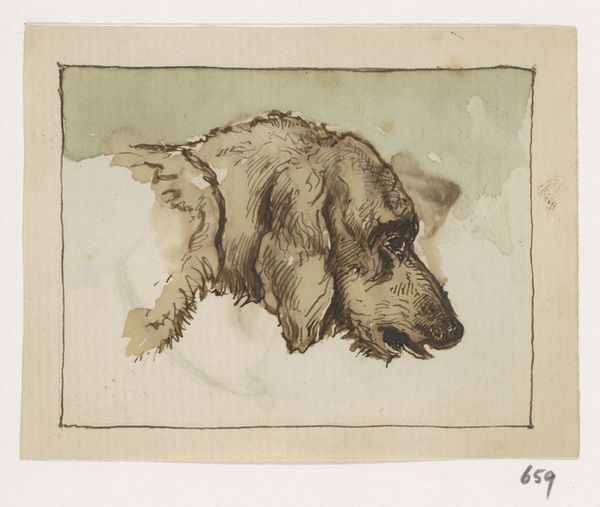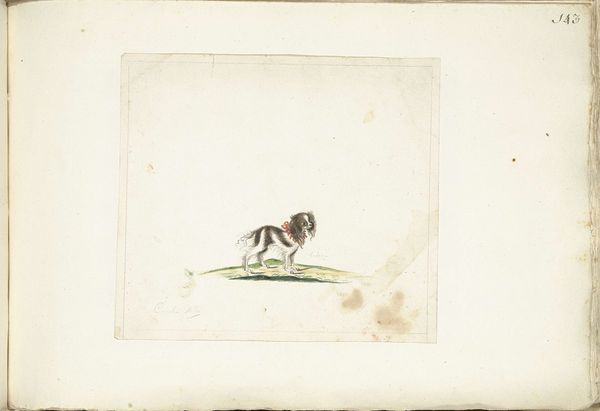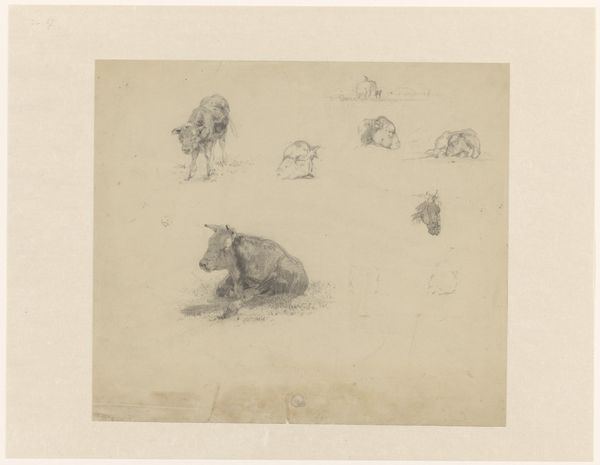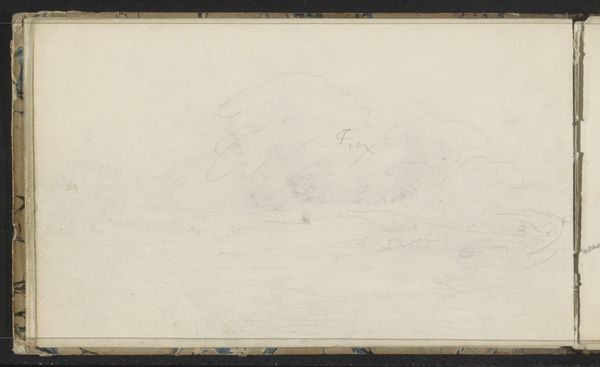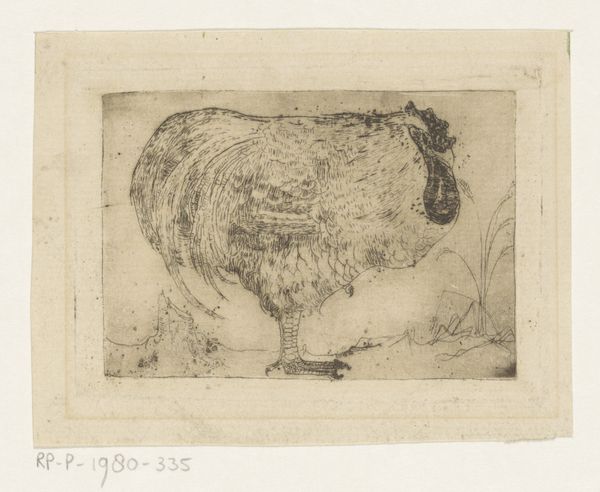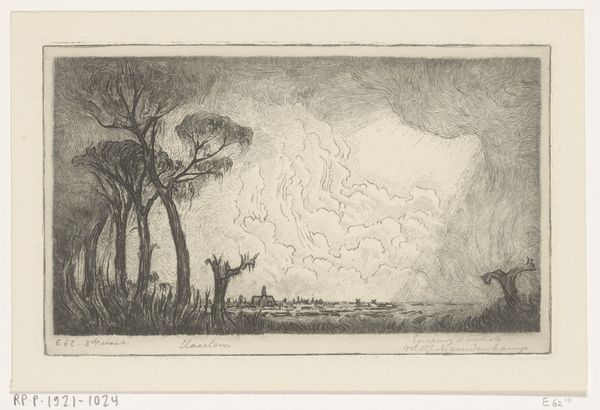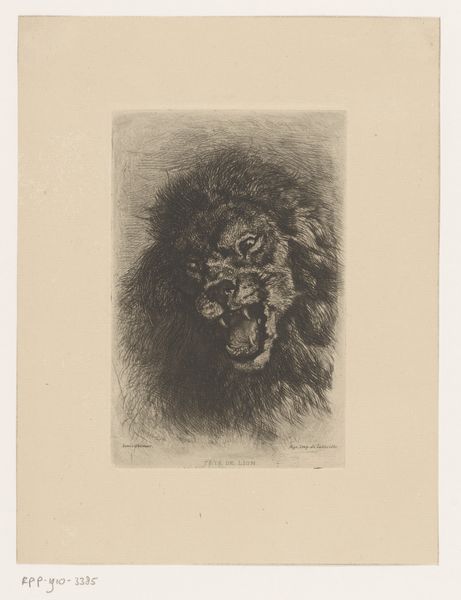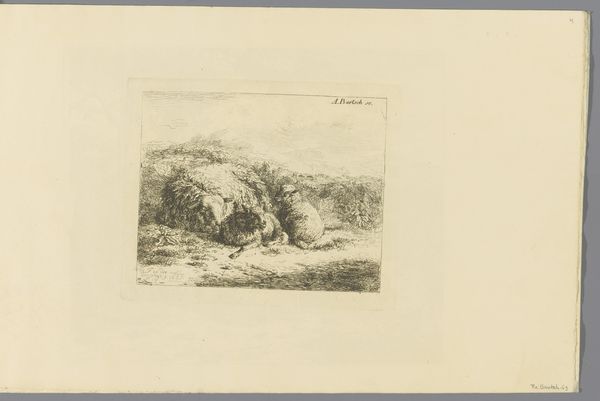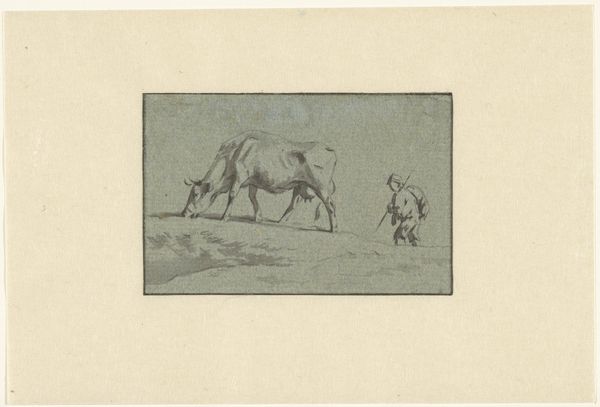
Dimensions: overall: 44.5 x 60.5 cm (17 1/2 x 23 13/16 in.)
Copyright: National Gallery of Art: CC0 1.0
Curator: Take a look at "Dying Buffalo Bull," painted by George Catlin sometime between 1861 and 1869. The artwork employs watercolors and coloured pencil on paper. What strikes you first about it? Editor: The mood is somber. The sky looks turbulent, matching the buffalo's visible distress. It's not just a depiction of death, but a scene thick with loss. Curator: Yes, and considering the buffalo holds significant symbolic weight, especially for the Indigenous peoples of the Great Plains, this image conveys more than just an individual animal's demise. The buffalo represents provision, survival, and spiritual connection to the land. Its decline signals cultural disruption. Editor: Absolutely. Catlin positions the bull as a solitary figure in an expansive landscape, which amplifies the sense of isolation. We can view this artwork in context with westward expansion, the systematic hunting of buffalo, and the forced displacement of Native American tribes. Curator: Considering its cultural importance, the way the artist chooses to portray the animal becomes really interesting. The bull's stance is almost passive, resigned, head hanging heavy, a physical manifestation of despair. It becomes a powerful emblem of loss for the indigenous population. Editor: And the fact that Catlin dedicated much of his career to documenting Native American life complicates his legacy. He presented himself as a protector of Native American culture while benefiting from its commodification and participating in its erasure. We see this paradox mirrored in his choice to frame a tragedy, turning cultural dispossession into an aesthetic object. Curator: That's a very poignant observation. What he saw versus what he did were two different things. Yet it holds power—we return to it again and again as a potent, disturbing visual record of ecological and cultural damage. Editor: It's a testament to art's potential to unearth uncomfortable truths, even when the artist’s motivations are mixed, to ignite difficult, yet important conversations. This image remains relevant because it visualizes a history that's still unfolding. Curator: This dialogue reinforces my awareness that iconic images contain an enduring ability to resonate and evolve. Editor: It serves as a stark reminder that these scenes carry multifaceted lessons we must actively consider.
Comments
No comments
Be the first to comment and join the conversation on the ultimate creative platform.
